

Volume 3, No. 2, Art. 18 – May 2002
The Use of Video Analysis Software in Behavior Observation Research: Interaction Patterns in Task-oriented Small Groups1)
Sabine C. Koch & Jörg Zumbach
Abstract: In two projects at the University of Heidelberg we tested the video analysis software THEME (MAGNUSSON, 1997) in order to identify communicative patterns in task-oriented small group interaction. In an instructional psychology project with a cognitive science background we analyzed collaborative knowledge construction processes within a Problem-Based Learning (PBL) session (ZUMBACH & REIMANN, 2000). In this study we found that before and after a training phase interaction patterns in a learning group would change in quality and quantity. Participants displayed, e.g., more complex interaction patterns in the final discussion—after an individual learning phase—than in the beginning, and this change of patterns was comprehensively visualized by the THEME output graphics. In an interdisciplinary project of psychologists and linguists we analyze observed and perceived gendered interaction and gender construction processes at the workplace in same-sex and mixed-sex team conversation (KOCH, KUBAT, KRUSE & THIMM, 2001). The focus is on power-related and support-related behavior as well as on qualities of the behavior, including verbal and nonverbal patterns. A turn- and sequence based coding scheme has been developed to analyze data from 20 teams that have been audio-visually taped during two or three of their routine team meetings at the workplace. Using THEME we were able to find two specific interaction patterns that would not have been easily detected without the help of the software.
The multimedia tool THEME, developed by Magnus S. MAGNUSSON from the University of Reykjavik in Iceland, combines different multivariate methods and thus helps to detect behavioral patterns over time that cannot easily be "eyeballed". The program searches for particular types of repeated syntactical real-time patterns based on probability theory, regardless of the unit of behavior. In this article we describe the use of the THEME software and address its potential within social sciences research.
Key words: video analysis, pattern analyses, behavior observation, social interaction, communication, gender, groups, Problem-Based Learning, knowledge co-construction
Table of Contents
1. Introduction
2. The THEME Software
3. Analysis of Power and Support-related Communication in Team Meetings
3.1 Visual dominance behavior
3.2 Support-related behavior
4. Analysis of Collaborative Learning Processes Using Video Analysis
4.1 The Problem-based learning process
4.2 Analyzing patterns of knowledge co-construction during a PBL-process
4.3 Method
4.4 Results
5. Discussion
"The activity of man constitutes a structural whole, in such a way that it cannot be subdivided into neat 'parts' or 'levels' ... Verbal and nonverbal activity is a unified whole, and theory and methodology should be organized or created to treat it as such."
PIKE, 1960, p.2
One goal of behavior observation research within the social sciences has been the development of methodologies approaching behavioral units as integral entities. While most research in the 20th century has still been separating out different levels and channels of behavior, the task of the 21st century will be to unify theses channel specific approaches and to attempt a more integrative perspective on behavior and interaction. Nowadays, multimedia tools are well suited to support this claim for integration, as they allow researchers to preserve the original complexity of data, while enabling them to analyze the data in units that are still comprehensive to us (BRUGMANN & KITA, 1995). The use of digital video technology that allows the video to run on screen while coding reduces the loss of data through transcriptions or selective summaries and makes other complicated technical prerequisites and procedures superfluous. [1]
Within our national research project "The communicative construction of gender in professional settings" (DFG) we have long been searching for a software tool that could help us to look at communicative patterns in face-to-face interaction. We are analyzing verbal as well as nonverbal communication in the context of team meetings at the workplace with a focus on power-related and support-related communication. We work on a microanalytic level and we are interested in the process rather than in the content of dynamic communicative interaction. We wanted a tool that would allow us a) to integrate the verbal and nonverbal analyses in particular gender-relevant sections of the recorded team meetings and b) to look at the interrelatedness of verbal and nonverbal behavior over time. We now believe to have found a solution that helps us to analyze particular segments as well as repetitive pattern between interlocutors over time: the THEME software (MAGNUSSON, 1997). This article will give an overview over the properties of the tool using an exemplary analysis of our data. In addition to THEME we have been looking at other software solutions for video analysis, among them INTERACT (MANGOLD, 2001) and THE OBSERVER (NOLDUS, 2001). These tools are even more powerful and more widely employed, however, they do not include the specific pattern detection method that we consider particularly useful for this type of social sciences research. This article will therefore be limited to the description of video analysis with THEME. [2]
THEME is a pattern analysis tool that has been developed by Magnus S. MAGNUSSON at the University of Reykjavik, Iceland. It helps the social sciences researcher to find behavioral patterns in observational data using a code-based detection algorithm.
"THEME is a computer program that has been developed for the study and detection of hidden patterns in intra- and inter-individual behavior. The program detects these patterns by performing structural analysis of intra- and inter-individual real-time behavior records and it takes simultaneously into account information about both the order and the relative timing of behavioral events in repeated patterns. This interval between time points is a statistical relationship called the critical interval relationship. For each interval there is calculated a statistical significance so as to establish that this chain of behavior occurs significantly more often with approximately the same internal intervals than is expected by chance given that the distribution is independent, random and uniform (zero hypothesis)." (MAGNUSSON, 1997) [3]
The philosophy behind THEME can best be summarized by reference to several important behavior-researchers MAGNUSSON (1997) quotes in his THEME Help-Manual: For example, GOFFMAN stated—as early as in the sixties— that there is a need to identify the countless patterns and natural sequences of behavior which occurs whenever people enter each other's presence. KENDON (1990) underlines this claim. And "behavior consists of pattern in time. Investigations of behavior deal with sequences that, in contrast to bodily characteristics, are not always visible" (EIBEL-EIBESFELD, 1970, cited from MAGNUSSON, 1997). Thus coming from social sciences behavior research MAGNUSSON started out to develop the THEME software in the 1980s. The history of the THEME Program is also briefly described in the THEME Help Manual:
"The THEME program has evolved over a number of years from a DOS program written in Fortran IV and running on PDP11 computers at the Psychological Lab, Copenhagen University (Magnusson, 1982) to a Windows program written in the Delphi language (Magnusson, 1995, 2000) and used in a number of psychological and ethnological laboratories in Europe and the USA. THEME has always been used in various kinds of behavior analysis where the detection and interpretation of repeated hidden behavior patterns has been one of the central concerns." (MAGNUSSON, 2001) [4]
THEME is particularly suited for communication analysis as well as any other microanalysis of behavior. Usually 10-20 Minutes segments are used as a basis, depending on the unit of the behavior under observation. An advantage of the tool, however, is that it generally works independent of the behavioral unit. The first step in the process of using THEME is to define the categories and codes of interest.
"The intended methodological approach when using Theme is quite classical. Beginning with a collection of relatively evident (objective) elements (events, facts) concerning a particular 'case', a particular type of behavioral stream, and proceeding from there through explicitly defined (objective) mathematical operations, in accordance with a relatively abstract theoretical/mathematical model concerning the more general case (behavior), towards the discovery of more complex elements (structures, patterns, ...) regarding the particular case hopefully creating new insights into the structure of the particular case." (MAGNUSSON, 1993) [5]
When the categories have been defined, the coding process can start. Coding is done along with the observation of the video, similar to a paper and pencil coding process, using the mouse instead of the pencil. A code-based protocol generated during the coding process is then used as the basis for the detection of repetitive patterns. The detection algorithm used is described by MAGNUSSON as follows:
"The Critical Interval Relationship C(S1, S2, d1, d2, N, p) is a statistical relationship between two time point series, S1 and S2, defined in the following way: Assuming the zero hypothesis that S1 is independently and uniformly distributed with density as observed, there is a free critical interval relationship between S1 and S2 with [d1,d2] as the critical interval if a) in significantly more than expected by chance of the intervals [ti+d1, ti+d2], i = 1 ... NS1, there occurs 'at least one element of S2' and b) increasing the size of [d1,d2] does not produce a significant higher N value while reducing it gives a lower N value. With ti = 1 ... NS1 representing the S1 series, N the number of such intervals containing 'at least one element of S2' and p the probability of N. If p remains significant when d1 is set to zero, there is, per definition, also a fast critical interval relation. The critical interval relation may be best considered as a kind of correlation especially with respect to questions of causality." (MAGNUSSON, 1997) [6]
The last sentence of the quote points us to the fact that the interpretation of the patterns is in the hands of the social science researchers and depends upon their insights and knowledge of the behavioral processes under observation. [7]
We will now look at two examples of our work: One example from communication research inspecting dynamic interaction in professional team meetings (KOCH, KUBAT, KRUSE & THIMM, 2001) and the other from instructional psychology analyzing patterns of knowledge co-construction. [8]
3. Analysis of Power and Support-related Communication in Team Meetings
The main goal of this research project (KOCH, KUBAT, KRUSE & THIMM, 2001) was to analyze the communicative construction of gender in professional settings with methods from language and social psychology as well as linguistics. Our data consists of repeated team meetings from 20 teams mainly from public services, training companies, production and software corporations. Same-sex and mixed-sex teams with either a male or a female boss were represented to equal parts. Teams have been audiovisually recorded during their usual routine team meetings on two or three subsequent occasions (without presence of researchers). After the meetings team members have been interviewed regarding their view of self and others in the team. In addition, they filled in a questionnaire about attributional style, mood, motivation, gender typicality, gender attitudes, and other constructs of relevance. [9]
We assume that powerful processes in face-to-face communication—many under the threshold of conscious awareness—are partially responsible for the fact that there still is no gender equality in all parts of professional life. Theory and empirical research point to an especially important role of power and support-related processes within the communicative construction of gender (BUTLER & GEIS, 1990; THIMM, 1990; THIMM & KRUSE, 1991; TANNEN, 1993; TANNEN, 1998). In an earlier related project (DFG, SFB 245) a coding scheme for power-related talk had been developed (THIMM, RADEMACHER, KRUSE, 1995) on which we based our power-related communication analysis, a sequential model including verbal and nonverbal behavior (KOCH, KUBAT, KRUSE & THIMM, 2001). The power-related communication analysis helps to make visible who in a team meeting displays power-claiming behavior and who displays power-yielding behavior. While frequency analyses were included from the beginning, the main aim of the power-related communication analysis is to identify the context specific behavior used by the actors in a prevailing communicative situation. Complementarities of behavior are a central aspect of this conceptualization. A power-claim can be accepted (ratification) or rejected by another team member. Only the process of ratification turns an action into a legitimate power display. [10]
Likewise, we developed a coding scheme for support-related behavior. Support-related behavior just like power-related behavior can be either accepted or rejected by the recipient. Under support-related behavior we subsume verbal and nonverbal feedback, supportive actions (intuitive), complex support behavior, thematic support (duration, initiation and completion) and evaluative affect, i.e., facial displays of either agreement/openness or disagreement/skepticism (see Table 1). Next to the behavioral facts and frequencies, we are also interested in the influence of certain behavioral qualities on the interaction process. Men and women using certain gender stereotypic movement qualities (BIRDWHISTELL, 1972; KESTENBERG, 1975; LABAN, 1960) which may play a role in workplace interactions. Following the theory of KESTENBERG (1995), certain bodily rhythms indicate specific needs and can further or hinder an interaction process. Some non-deliberate but observable units of behavior indicate learning styles or defense mechanisms in use, other more conscious ones indicate one's relation to space, time and oneself. Shape-flow indicates how far our emotions are a part of our actions and how authentic we feel in a certain environment. Some shaping movements help us structure ourselves in a given environment and others serve the purpose to built connections to our social interlocutors. Of particular methodological interest is the rhythms' analysis within the KESTENBERG analysis system, as continuous data results from it (KESTENBERG-AMIGHI, LOMAN, LEWIS & SOSSIN, 1999). These data are so far only analyzed in terms of frequencies causing a considerable loss of data. With the help of THEME an analysis of sequences and repetitive patterns will now be possible as well. [11]
Next to verbal dominance behavior (NG & BRADAC, 1993; SCHMITT-MAST, in press; THIMM, 1990) there is a whole variety of nonverbal dominance behaviors, the most important and best researched one being visual dominance behavior (DOVIDIO & ELLYSON, 1985). DOVIDIO and ELLYSON (1985) define the influence of a person A within a given team as the ratio of person A looks while talks (lwt) to person A looks while listens (lwl). The bigger the resulting ratio the bigger the influence of person A in the team (DOVIDIO & ELLYSON, 1985). Other visual dominance cues are expansiveness, degree of relaxation, amount of gesturing, and vocal cues (cf. HALL, 1984; MEHRABIAN, 1970; ROSENTHAL & DEPAOLO, 1979). From all the possible components of gaze behavior we decided to focus on looks while listens (lwl) vs. looks while talks (lwt). These are the ones with the most important implications for power-related behavior and team influence and they are the most pragmatic ones to observe (DOVIDIO & ELLYSON, 1985). [12]
In an analysis with THEME it is first necessary to videotape a certain situation of interest. All sequences of interest for the analysis then need to be digitalized. In order to code single behaviors a behavior coding scheme needs to be developed and transformed into the so called VVT-table (MAGNUSSON, 1997). Behavior categories get assigned specific abbreviations and thus can be coded by just using mouse clicks on the screen. Next to a behavioral unit the coder also needs to assign the actor and the target of a specific action and to mark this action with a "b" for begin as it starts and whenever it is over with an "e" for end. In the first scene Hanno (the boss) displays an action that asks for a reaction from Chris (i.e., Hanno addresses a verbal question to Chris or his gaze makes clear that he waits for a reaction from Chris). In either case the action of Hanno would be coded as follows:
H, b, C1, a+ (Hanno begins to display an action demanding a reaction from Chris) and
H, e, C1, a+ (Hanno ends to display an action demanding a reaction from Chris).
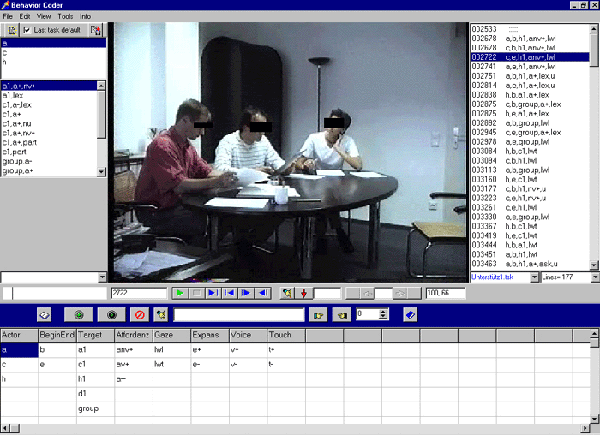
Figure 1: Team A as displayed in the multimedia behavior coder (VVT-table in the lower half of the screen)—a team meeting of three trainers; observational focus on visual dominance behavior (lwl vs. lwt) [13]
This fashion of input allows the calculation not only of distinct events but also of durations of single actions and duration totals of events and single event types. In the same coding process we also looked at expansiveness, vocal cues and touch (see VVT-table above), which will not be treated further here. After the video material has been coded by mouse clicks on the VVT-table on screen the resulting data protocol (right upper side of the screen) is now the baseline for the analysis. Before analyzing the data a few parameters for the analysis have to be specified, like the level of significance we would like to obtain and the minimum number of repetitions that need to be given in order to talk about a pattern. All this depends of course on the level of data, the size of the units and the total duration coded. Then the pattern analysis can be conducted. As results we get different statistics and graphical overviews (among them the so called T-pattern, which will mostly be used to display the results below), which then need to be interpreted by the researcher. This method allows the detection of interaction patterns that cannot be processed by merely "eyeballing" the behavior of interest.
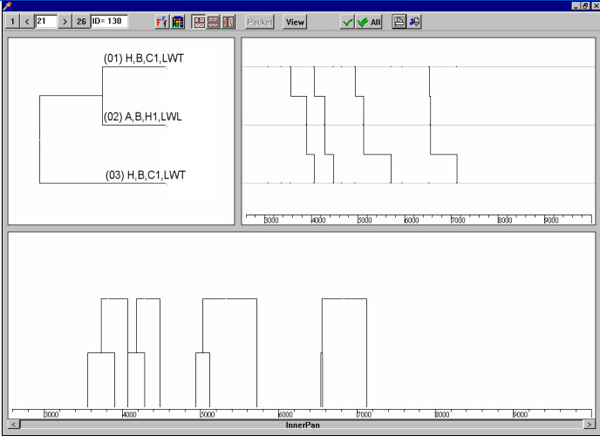
Figure 2: Typical interaction pattern of Team A [14]
When Hanno (the boss) starts to look to Chris while he talks, Ann starts to look to Hanno while she listens holding her gaze pattern even after Hanno stops talking to Chris (Figure 2).
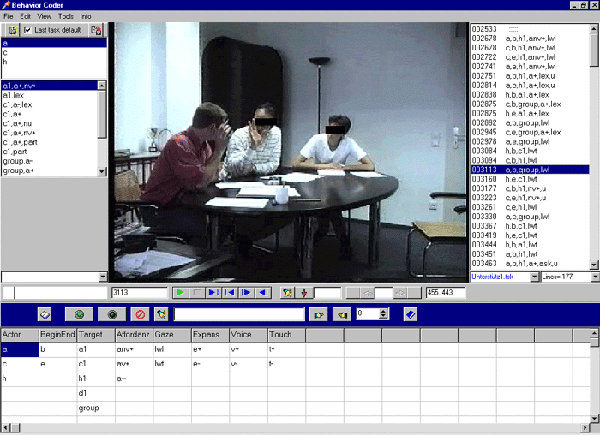
Figure 3: Multimedia behavior coder view of the typical interaction pattern (Team A) [15]
When Hanno (the boss) starts to look to Chris while he talks, Ann starts to look to Hanno while she listens holding her gaze pattern even after Hanno stops talking to Chris (Figure 2). The video window shows the scene as one out of four occurrences where this pattern happens in the exact same sequence in an eight minute segment of Team A's interaction (Figure 3). [16]
Our working definition of support behavior is: any behavior where the intended action of actor A (Action A) is furthered by an actor B (action B, supportive), meaning that the vector2) of both actions points into the same direction and is not diverted to a considerable amount from its original direction or point of destination. Non-supportive behavior would then consequently be any behavior where the intended action of an actor A (action A) is blocked or derailed considerably by an actor B (action B, non-supportive), meaning that the vector of action A is diverted to a considerable amount by the vector of action B from its direction or destination. The relation to power-related communication is obvious: The greater the influence of actor B, the more efficient her interventions will be. Categories under observation in the conjoint of our support-related analyses are displayed in Table 1.
|
Category |
Feedback |
Support |
Complex Support |
Thematic Support |
Evaluative Affect |
|
Channel |
verbal & |
verbal & nonverbal |
verbal |
mostly verbal |
nonverbal |
|
Coding |
-1 = negative 0 = neutral 1 = positive |
-2 = no reaction -1 = non supportive 0 = neutral 1 = supportive behavior 2 = explicit support, |
1 = rephrasing 2 = complementing |
1 = initiation 2 = completion |
-1 = skeptic 0 = neutral 1 = open |
Table 1: Coding scheme for categories of support-related communication [17]
The following analysis has been taken from a preliminary work on the development of the support-related coding scheme (BISCHOFF, 2001) looking at 2 hours out of 60 hours of material. The team described below is the same four person training team as used in the example above. They have been taped in their weekly routine team meeting over a couple of weeks. The example tackles two incidences of support-related behavior which due to their complexity could not be easily detected without the help of the software.
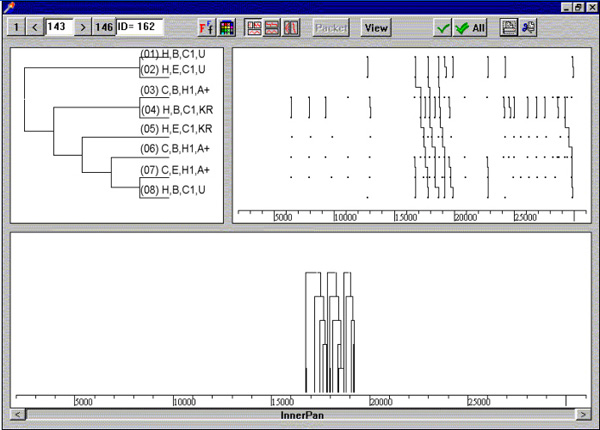
Figure 4: Asking for a reaction [18]
In the first example (Figure 5), Hanno (H) starts to support (U) Chris (C), he ends the action and Chris starts to display an action (a+) demanding a reaction from Hanno. In spite of the action displayed, Hanno does not support Chris, but displays no reaction (kR). In reply, Chris starts anew to display an action (a+) to Hanno demanding a reaction until Hanno finally starts to support Chris. This behavior may possibly be guessed from watching the video, however, one easily under- or overestimates the frequency. The pattern shows how Hanno has Chris "beg for a reaction" four times in a 12 minute segment in the second half of the team meeting; three times the pattern follows shortly one after the other, i.e., Chris poses a question and looks to Hanno waiting for a reaction, but does not receive an answer or a reaction. Three times the sequence is complete and a fourth time at the end of the team meeting the sequence is not preceded by a supportive action from Hanno. Another interesting sequence that was not obvious when merely watching the video, was the following (see Figure 5):
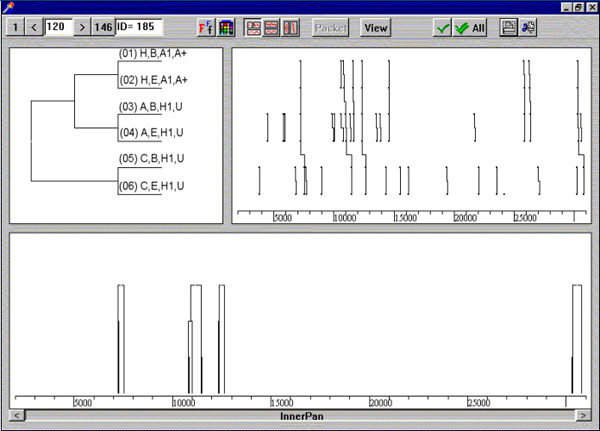
Figure 5: Offering additional support [19]
Here Hanno (H) starts to display an action demanding a reaction from Ann (A), he ends the action and Ann starts to support Hanno. This occurs eight times. Interestingly, in four out of the eight times this behavior is followed by Chris (C) also starting to support Hanno. This could be due to Hanno's position as the boss and therefore be subject to a power motive, on the other hand, it could also be due to the topics talked about which per se could be of interest and relevance to Chris' work. In order to be able to interpret this pattern we need to go back to the context in which the behavior occurs. The exact points of occurrence are obvious from the time-line, but can also be searched from the pattern protocol for interpretation. In this case the data analysis showed that Chris would be submissive towards Hanno over a variety of contexts in the first three of these four incidences. Hanno on the other side would be displaying his indifference (kR = no reaction) and thus demonstrate his power over Chris. Today, Chris is no longer working in this team. [20]
4. Analysis of Collaborative Learning Processes Using Video Analysis
In the following example we use behavioral video analysis in order to understand more about knowledge building processes in collaborative learning. We focus on a specific kind of small group collaborative learning named Problem-Based Learning (PBL). Problem-Based Learning is a way of teaching and learning in a curriculum that realizes contemporary approaches of situated cognition and social construction of knowledge (e.g. LAVE & WENGER, 1991). In PBL curricula students are faced with authentic problem-scenarios, commonly presented as verbal descriptions. These problems are discussed in small groups from three up to ten students under a tutor's supervision. Our main interest in this methodological approach here is to understand how different phases and episodes in a PBL-process support students' knowledge construction. In order to understand these knowledge building processes a more detailed description of the PBL process is necessary. [21]
4.1 The Problem-based learning process
In PBL there are some basic principles involved that can be summarized as follows (e.g., BARROWS, 1985; THOMAS, 1997): learning in small groups is initiated through authentic and ill-structured problems. Students discuss these problems in order to identify their state of knowledge and what they need to know. This leads them to the definition of learning objectives and the organization of each individual's tasks and learning steps. Afterwards, each student gathers problem-relevant information from literature, databases, experts, etc., in order to complete his or her objectives and thus to finally solve the stated problem. In a follow-up meeting which is also moderated by a tutor the individual results are collected and discussed. Then a new problem or case is given. [22]
The small group discussion among students and tutor is crucial to the PBL-Process (VILLER, 1991). Small group discussions are important to identify problems resulting from the case in the initial phase of a PBL session and the problem-solution phase. While discussing students define what to learn, they distribute tasks, apply newly collected knowledge and discuss solutions to the problem (DOLMANS, SCHMIDT & GIJSELAERS, 1994). Small group discussions enhance knowledge acquisition and deepen students' understanding by means of social knowledge construction (DOLMANS et al., 1994; GIJSELAERS, 1996). Taking a look at a single PBL unit, i.e., students working on one single problem taken out of a complete curriculum, the following process is typical (see Figure 6).
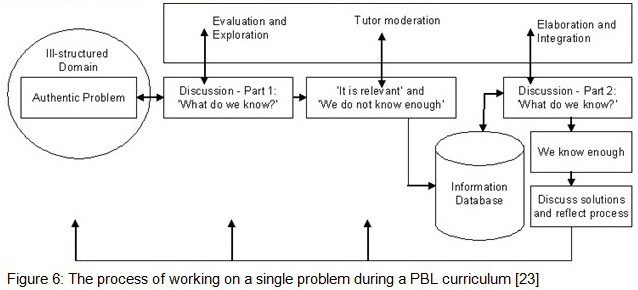
Figure 6: The process of working on a single problem during a PBL curriculum [23]
The role of the tutor is crucial to the PBL-process because he or she is guiding students during the problem solving process (KOSCHMANN, FELTOVICH, MYERS & BARROWS, 1995). While research provides no clear evidence whether a tutor should be an expert in the field of the problem or not, the tutor's role is undoubtedly of crucial importance in order to guide small group discussion and to lead students to accomplish learning objectives (both: their own and faculty's). [24]
In the following analysis we focus on the problem discussion phases before and after the individual learning phase. We are mainly interested in analyzing how students and tutor interact in these periods and how they (co-) construct coherence and common knowledge (e.g., CHI, SILER, JEONG, YAMAUCHI & HASUMANN, 2001; JEONG & CHI, 1997). [25]
4.2 Analyzing patterns of knowledge co-construction during a PBL-process
In recent years there has been a steady growth of interest in analyzing qualitative processes of Problem-Based Learning (e.g., GLENN, KOSCHMANN & CONLEE, 1999). In our approach, we are interested in investigating patterns of knowledge co-construction during a single problem PBL-unit by means of behavioral video analysis. We regard the group's task above all as a common knowledge construction task, i.e., they have to perform a socially shared sense making (DILLENBOURG, BAKER, BLAYE & O'MALLEY, 1995). In Problem-Based Learning this shared sense making is reached by dialogue in small group discussion. According to FISCHER, BRUHN, GRÄSEL and MANDL (1998) the underlying communication processes can be divided into three parts: (1) Externalization: Learner (or tutor) A shares his or her task-related knowledge with others; (2) Elicitation: Person A arranges that person B or others contribute their knowledge related to A's externalization (e.g., A asks another learner, tutor or the whole group); (3) Consensualization: Deviant opinions and understandings are regarded as triggering learning processes, i.e., a conflict raises the need for a consensus. This consensus could be an extension of individual or shared knowledge or a restructuring of existing knowledge structures (ZUMBACH, MUEHLENBROCK, JANSEN, REIMANN & HOPPE, 2002). [26]
For this purpose of analyzing knowledge co-construction in PBL small group discussion we performed a single PBL session. In this session three students and one tutor had to work on a problem in the field of clinical psychology concerning causes, diagnosis and therapy of depression and anorexia. Although we conducted a shortened session for this analysis all phases of a typical PBL-process were covered: The process started with an initial problem-discussion supervised by a tutor who is expert in the domain of the clinical case. During this phase which lasted about 25 minutes students determined what they actually knew and what they did not know about the problem and generated learning objectives. After this first small group discussion phase each of them was guided to a separate room where they had about 45 minutes to read a chapter from a textbook providing all necessary information to solve the problem. After this learning phase the whole group met again for about 30 minutes for the final problem discussion which was also guided by the tutor. Both discussion sessions were videotaped and digitalized for computer supported analysis. [27]
In order to analyze small group discussion patterns of knowledge co-construction we developed a coding scheme for analyzing our data with the THEME software. For this purpose, we integrated syntactic data as well as semantic data as, e.g., used in discourse analysis. The underlying assumptions for developing the coding scheme were derived from the idea of dividing the communication process into the three phases of Externalization, Elicitation and Consensualization (FISCHER et al., 1998; see above). In addition, we adapted principles from activity recognition used for syntactic computational analysis of user interaction in shared workspaces (MUEHLENBROCK & HOPPE, 1999). This method is based on the idea of observing and recognizing user actions and indicating specific patterns of activity and interaction in synchronous computer-mediated communication in shared workspaces (e.g. ZUMBACH et al., 2002). Activity recognition conceptualizes actions as occurring in the context of some state (situation) and in the context of other actions. In computer-based analysis a stream of actions from a shared workspace and a set of operators are taken as input. Abstract notions of group activity and interpretations of problem-related conflicts and coordination are automatically and incrementally inferred. Calculation loops on recognized activities lead to recognition of higher concepts. Contrary to linguistic approaches the focus of activity recognition is on the analysis of directly observable operations (MUEHLENBROCK, 2001). Although this method does not rely on domain knowledge, we used here an approach for coding data that integrates verbal information to improve the results of our analysis. Derived from these methodological considerations we used the following coding scheme for analyzing knowledge co-construction patterns with the THEME software (see Table 2):
|
Subject |
Start/ |
Object |
Communication Phase |
Phase of Knowledge Building |
Knowledge Creation/ |
|
Learner A |
S |
Learner A |
Answer |
Initiate |
Create |
|
Learner B |
E |
Learner B |
Question |
Complete |
Destroy |
|
Learner C |
|
Learner C |
Pro |
|
|
|
Tutor |
|
Tutor |
Contra |
|
|
|
|
|
Group |
Else |
|
|
Table 2: Coding scheme used in the analysis [28]
For analysis, we coded all interactions during the small group discussions, determining which person interacted with any other persons or with the whole group. We extended the coding of the communication phase with pro and contra in order to distinguish consensualization. We also added "else" in order to integrate nonverbal behavior (for example using the common pin board). The phase of knowledge building encompasses here the initiation or the completion of knowledge through externalization. A common interaction is, e.g., the tutor asking about a possible therapy of depression in this case (initiate creation of common knowledge) and a learner giving a correct answer (completion of common knowledge). If a student provides a wrong answer the tutor might reject it which is an example for "destroying" an information unit. Central purpose of our analysis was to examine the changes in small group discussion patterns before and after the individual learning phase. We assumed that interaction among learners would increase in the problem solution phase as well as tutor behavior would change in between both phases. While the first part of the problem discussion should be more of a hypothesizing nature with more patterns of creating and destroying shared knowledge, in the second part we expected more creation-events. [29]
Within a 45 minute video sequence 716 events overall were coded depicting 358 actions. In the initial discussion of about 20 minutes there were 242 events (121 actions), in the problem solution discussion of about 25 minutes we found 474 events (236 actions). THEME pattern search using a minimum of 4 related actions and at a significance level of p<.005 detected 190 significant patterns from the 716 coded events. The following graphs of patterns have been chosen for further interpretation because of their face validity in demonstrating a change of processes between the two phases of the small group discussion.
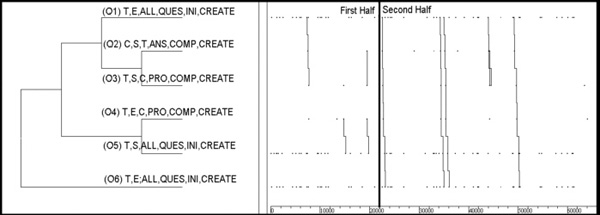
Figure 7: Example 1 of complex interaction patterns [30]
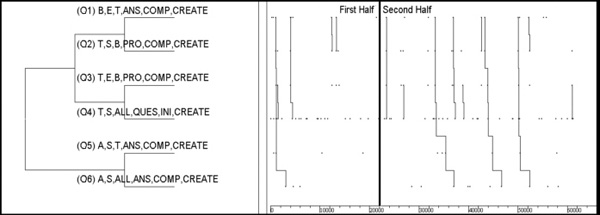
Figure 8: Example 2 of complex interaction patterns [31]
Figure 7 (top) shows that in the second half there are more complex interactions of specific pattern: The Tutor (T) is asking the group (all) to initiate (ini) a knowledge creation process (create). Learner C gives a correct answer and supports his/her correct statement. Immediately afterwards, the tutor takes this information and asks another question to the group (all). Shorter parts of this pattern can also be found in the first half, but because of lack of knowledge among learners the occurrence of the full complex pattern is unlikely. Figure 8 (bottom) shows a similar pattern with learner B providing a correct statement, the tutor (T) supporting a knowledge creation process, asking another question and receiving another knowledge building answer from learner A speaking to the whole group.
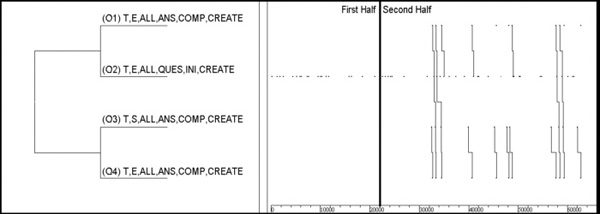
Figure 9: Example of changing tutor behavior [32]
Figure 9 shows a change in the tutor's behavior from the first to the second small group discussion. When in the initial problem discussion the tutors fostered the learners' hypothesizing and questioning (without providing answers to the questions he posed), in the second half he changed the pattern into answering his own questions if nobody else would do so in order to create knowledge building processes. This included providing knowledge building answers to students' questions as well as answering own questions in case of lacking learners' answers. The last example (see Figure 10) is the only significant pattern of "destroy". There are more destroy-patterns in the first half, each describing the tutor agreeing to learner B destroying wrong information (in all cases given by learner C). As all students possess more correct information in the second half, less wrong or wrongly hypothesized statements have to be rejected.
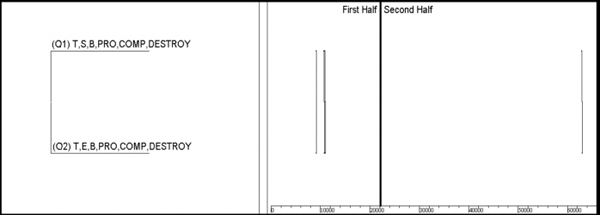
Figure 10: Example of a destroy pattern [33]
The results from our studies show how video analysis with THEME can be used context independently in two completely different fields of research. In fact, the tool is useful in any analysis dealing with social interaction and communication processes independent of the unit of the behavior under observation. Moreover, it might also be used for pattern detection on an individual level or for interactions between any living entity and an object. One can furthermore imagine that the observation of dynamic natural phenomena could benefit from the use of the tool. [34]
The results of the communication analysis computed with the THEME software show in an exemplary manner that analyses with THEME can be conducted in a very differentiated and flexible manner, also enabling the researcher to uncover hidden patterns of dynamic interaction that one might miss without the multimedia support. The tool allows flexible handling of the coding process: Verbal and nonverbal patterns can be analyzed either in one coding process or sequentially and can then be computed in an integrative manner. Categories that have been forgotten earlier or that prove to be superfluous can easily be added or dropped during the coding process. This leaves the researcher more exploratory freedom in addition to several different possibilities to approach the analysis. [35]
In our second example, we were able to demonstrate how knowledge building processes change during a full PBL session. Patterns of knowledge co-construction among learners completely changed between the initial problem discussion and the problem solution discussion where they were able to apply their newly gained knowledge. In a single session we examined patterns of interaction between learners and a tutor who is an expert in the field of interest for the study. As in current research the role of tutor's expertise in PBL is not clear we plan to conduct further analyses with a non-expert tutor leading a PBL-session in order to examine patterns of knowledge co-construction under different circumstances. [36]
Our examples show the usefulness of THEME as a the tool for the qualitative analysis of scientific data collected in the field as well as in the laboratory, in applied as well as basic research contexts. We believe that the tool has a high potential in social sciences research as it is applicable to a wide variety of research questions and phenomena and it can be used in a context independent and flexible fashion. Thus, we would like to encourage its use as a tool for qualitative research in the behavioral and social sciences. [37]
Joerg ZUMBACH thanks Peter SPRAUL for tutoring many PBL-sessions. Sabine KOCH thanks Silke BISCHOFF for the support-related behavior analysis in the context of her diploma thesis.
1) The studies carried out belong to a psycholinguist project at the University of Heidelberg as part of a larger interdisciplinary national project (DFG) about the societal change of women's role in the workplace. <back>
2) The concept and terminology vector is taken from LEWIN (1951). <back>
Barrows, Howard S. (1985). How to Design a Problem-Based Curriculum for the Preclinical Years. New York: Springer.
Birdwhistell, Ray (1972). Kinesics and Context. Essays on Body Motion Communication. New York: Ballantine Books.
Bischoff, Silke (2001). Verbale und Nonverbale Unterstützung in Teamsitzungen. Entwicklung und Exemplarische Anwendung eines Kodierschemas zur Erfassung von Geschlechterunterschieden im Rückmeldeverhalten. Heidelberg: Unveröffentlichte Diplomarbeit.
Butler, Doré & Geis, Florence (1990). Nonverbal Affect Responses to Male and Female Leaders: Implications for Leadership Evaluation. Journal for Personality and Social Psychology, 58, 48-59.
Brugman, Hennie & Kita, Sotaro (1995). Impact of Digital Video Technology on Transcription. A Case of Spontaneous Gesture Transcription. Ars Semiotica, 18, 95-112.
Chi, Michelene; Siler, Stephanie; Jeong, Heisawn; Yamauchi, Takashi & Hausmann, Robert (2001). Learning from human tutoring. Cognitive Science, 25, 471-533.
Dillenbourg, Pierre; Baker, Michael; Blaye, Agnes & O'Mallay, Claire (1995). The Evolution of Research on Collaborative Learning. In Peter Reimann & Hans Spada (Eds.), Learning in Humans and Machines: towards an interdisciplinary learning science (pp.198-211). Amsterdam: Elsevier.
Dolmans, Diana H. J; Schmidt, M.; Henk, G. & Gijselaers, Wim H. (1994). The relationship between student-generated learning issues and self-study in problem-based learning. Instructional Science, 22(4), 251-267.
Dovidio, John F. & Ellyson, Steve L. (1985). Power, Dominance and Nonverbal Behavior. New York: Springer.
Fischer, Frank; Bruhn, Johannes; Gräsel, Cornelia & Mandl, Heinz (1998). Strukturangebote für die gemeinsame Wissenskonstruktion beim kooperativen Lernen. Universität München, Lehrstuhl f. Empirische Pädagogik und Pädagogische Psychologie. Forschungsbericht Nr. 97 (Oktober 1998).
Gijselaers, Wim H. (1996). Connecting Problem-Based Practices with Educational Theory. In LuAnn Wilkerson & Wim H. Gijselaers (Eds.), Bringing Problem-Based Learning to Higher Education: Theory and Practice (pp.13-21). San Francisco: Jossey-Bass.
Glenn, Philipp; Koschmann, Thimothy & Conlee, Melinda (1999). Theory sequences in a problem-based learning group: A case study. Discourse Processes, 27, 119-133.
Hall, Judith A. (1984). Nonverbal Sex Differences. Communication Accuracy and Expressive Style. Baltimore, MD: John Hopkins University Press.
Jeong, Heisawn & Chi, Michelene (1997). Construction of Shared Knowledge During Collaborative Learning. Paper presented at the Computer Support for Collaborative Learning Conference 1997 at the Ontario Institute for Studies in Education, University of Toronto December, 10-14th 1997.
Kendon, Adam (1990). Conducting interaction: patterns of behavior in focused encounters. Cambridge: Cambridge University Press.
Kestenberg, Judith S. (1995). Sexuality, Body Movement and the Rhythms of Development. Northvale: Jason Aronson (originally published in 1975).
Kestenberg-Amighi, Janet; Loman, Susan; Lewis, Penny & Sossin, K. Marc (1999). The Meaning of Movement. Developmental Perspectives of the Kestenberg Movement Profile. Amsterdam: Gordon & Breach.
Koch, Sabine; Kubat, Antje; Kruse, Lenelis & Thimm, Caja (2001). Die kommunikative Konstruktion von Geschlecht in beruflichen Settings: Stichprobe, Kodierschemata und erste Befunde. Arbeitsbericht Nr. 2. Universität Heidelberg: Unveröffentlichter Forschungsbericht.
Koschmann, Thimothy D.; Feltovich, Paul J.; Myers, Ann C. & Barrows, Howard S (1995). Implications of CSCL for Problem-Based Learning. Paper presented at the CSCL Conference in Indiana, USA, 1995.
Laban, Rudolph von (1960). The Mastery of Movement. London: MacDonald & Evans.
Lave, Jean & Wenger, Etienne (1991). Situated learning. Legitimate peripheral participation. Cambridge: University Press.
Lewin, Kurt (1951). Field Theory in Social Science. New York: Harper Row.
Magnusson, Magnus S. (1993). THEME behavior research software. User's Manual—with notes on theory, model and pattern detection method. University of Iceland, Reykjavik: Unpublished Manuscript.
Magnusson, Magnus S. (1997). Theme Help Manual. Version 1997. University of Iceland, Reykjavik.
Magnusson, Magnus S. (2001). Theme Help Manual. Version 2001. University of Iceland, Reykjavik.
Mangold, Pascal (2001). Interact [On-line]. Available at: http://www.mangold.de.
Mehrabian, Albert (1970). A Semantic Space for Nonverbal Behavior. Journal of Consulting and Clinical Psychology, 35(2), 248-257.
Muehlenbrock, Martin (2001). Action-based Collaboration Analysis for Group Learning. Amsterdam, The Netherlands: IOS Press.
Muehlenbrock, Martin & Hoppe, Hans-Ulrich (1999). Computer-supported interaction analysis of group problem solving. In Christopher Hoadley & Jeremy Roschelle (Eds.), Proceedings of the conference on Computer-supported Collaborative Learning, CSCL-99, (pp.398-405). Mahwah, NJ: Erlbaum.
Ng, Sik H. & Bradac, James (1993). Power in Language. Verbal Communication and Social Influence. Newbury Park: Sage.
Noldus, Lucas P. J. J. (2001). The Observer [Online]. Available at: http://www.noldus.com.
Pike, Kenneth L. (1960). Toward a theory of change and bilingualism. Studies in Linguistics, 15, 1-7.
Rosenthal, Robert & DePaolo, Bella (1979). Sex Differences in Eavesdropping on Nonverbal Cues. Journal of Personality and Social Psychology, 37 (2), 273-285.
Schmid-Mast, M. (in press). Gender differences and similarities in dominance hierarchies in same-sex groups based on speaking time. Sex Roles.
Schmidt, Henk G. & Moust, Jos H. C. (1995). What Makes a Tutor Effective? A Structural-Equations Modeling Approach to Learning in Problem-based Curricula. Academic Medicine, 70(8), 708-714.
Tannen, Deborah (1993). Gender and Conversational Interaction. New York: Oxford University Press.
Tannen, Deborah (1998). The Relativity of Linguistic Strategies. Rethinking Power and Solidarity in Gender and Dominance. In Deborah Cameron (Ed.). The Feminist Critique of Language: A Reader. Padstow: TJ International.
Thimm, Caja (1990). Dominanz und Sprache. Strategisches Handeln im Alltag. Wiesbaden: Deutscher Universitätsverlag.
Thimm, Caja & Kruse, Lenelis (1991). Dominanz, Macht und Status als Elemente sprachlicher Interaktion. Ein Literaturbericht. Arbeiten aus dem Sonderforschungsbereich 245 "Sprechen und Sprachverstehen im sozialen Kontext", vol. 39, Universität Heidelberg.
Thimm, Caja; Rademacher, Ute & Kruse, Lenelis (1995). "Power-Related Talk". Control in Verbal Interaction. Journal of Language and Social Psychology, 14(4), 328-407.
Thomas, Roger E. (1997). Problem-based learning: Measurable outcomes. Medical Education, 31(5), 320-329.
Viller, Stephen (1991). The Group Facilitator: A CSCW Perspective. In Liam Bannon, Mike Robinson & Kjeld Schmidt (Eds.). Proceedings of the Second European Conference on Computer-Supported Cooperative Work (pp.145-152). Amsterdam: Kluwer.
Zumbach, Joerg; Muehlenbrock, Martin; Jansen, Marc; Reimann, Peter & Hoppe, Hans-Ulrich (2002). Multidimensional Tracking in Virtual Learning Teams. In Gerry Stahl (Ed.), Computer Support for collaborative learning: Foundations for a CSCL community (pp.650-651). Hillsdale, NJ: Erlbaum.
Zumbach, Joerg & Reimann, Peter (2000). Problem-Based Learning als konstruktivistischer Ansatz in der internetbasierten Umweltpädagogik. In Klaus Tochtermann & Wolf-F. Riekert (Eds.), Hypermedia im Umweltschutz (pp.55-58). Marburg: Metropolis.
Sabine C. KOCH, psychologist, and dance/movement therapist, M.A., DTR, (born 1967) studied Psychology at the University of Heidelberg, Germany, and Madrid, Spain. She holds an M.A. in Dance- and Movement-Therapy from Hahnemann University in Philadelphia (USA). During her studies in movement- and dance therapy she specialized in movement observation and movement analysis. Currently she is working on her PhD about nonverbal communication of gender at the workplace in an interdisciplinary project of psychologists and linguists funded by the German Science Foundation ("Organization – Professionalization – Gender") at the University of Heidelberg using qualitative as well as quantitative methods from social psychology and linguistics like, e.g., content analysis, discourse analysis, video analysis, LABAN and KESTENBERG movement analysis, structural analysis and pattern analysis. Her research fields are: nonverbal communication and interaction, behavior observation, gender, small group research, status, power, support, movement analysis, and rhythms.
Contact:
Sabine C. Koch
Hauptstr. 47-51
D-69117 Heidelberg
E-mail: sabine.koch@urz.uni-heidelberg.de
URL: http://workcomm.uni-hd.de
Joerg ZUMBACH (born 1973) has a diploma in Psychology from Heidelberg University. He is researcher and lecturer at the department of Instructional Psychology at the University of Heidelberg (http://www.paedagogischepsychologie.de). His current research focuses on teaching and learning with computers and computer networks, collaborative learning with and without technology especially analyzing Problem-Based Learning. Most of his book and paper publications are in the fields of Cognitive and Instructional Psychology examining learning processes in technology-based situated learning environments.
Contact:
Joerg Zumbach
Institute of Psychology
Hauptstr. 47-51
D-69117 Heidelberg
E-mail: Zumbach@uni-hd.de
URL: http://zumbach.psi.uni-heidelberg.de
Koch, Sabine C. & Zumbach, Jörg (2002). The Use of Video Analysis Software in Behavior Observation Research: Interaction Patterns in Task-oriented Small Groups [37 paragraphs]. Forum Qualitative Sozialforschung / Forum: Qualitative Social Research, 3(2), Art. 18; http://nbn-resolving.de/urn:nbn:de:0114-fqs0202187.
Revised 2/2007